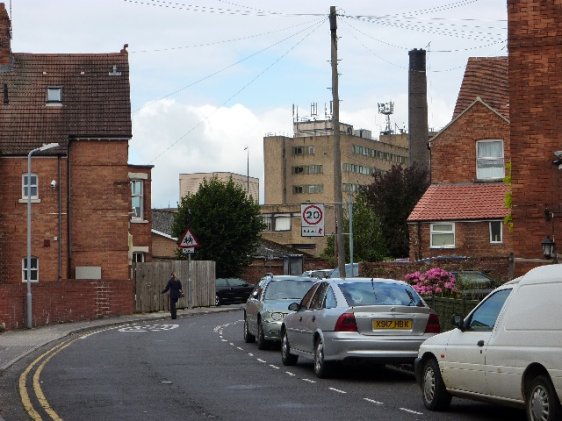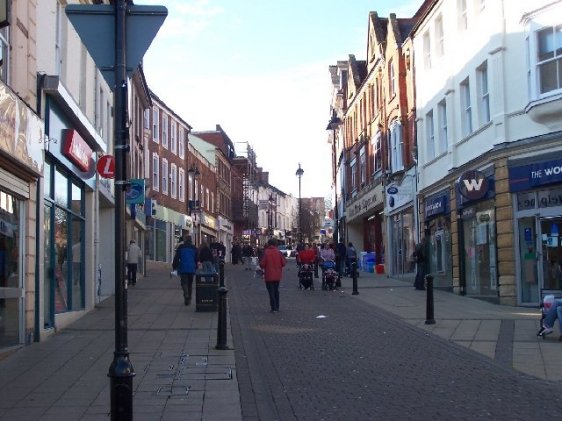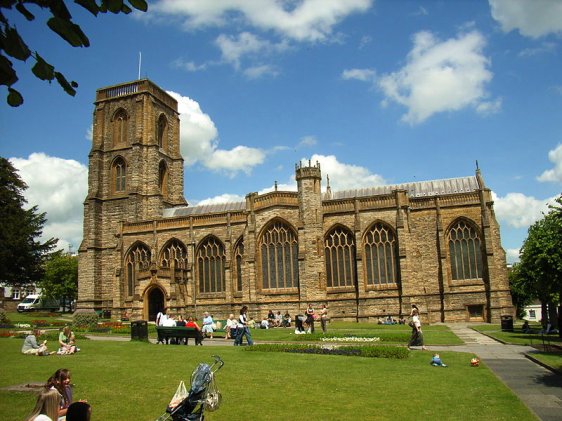 Yeovil, Somerset, England: Source: https://commons.wikimedia.org/wiki/File:Crofton_Park_and_the_rear_of_the_hospital_-_geograph.org.uk_-_1406120.jpg
Yeovil, Somerset, England: Source: https://commons.wikimedia.org/wiki/File:Crofton_Park_and_the_rear_of_the_hospital_-_geograph.org.uk_-_1406120.jpgAuthor: Steve Barnes

Yeovil is a town in South Somerset, England. It is close to the border with Dorset, and is 48 km (30 mi) from Taunton, the Somerset county town. Yeovil has a population of 30,000 people (2012 estimate) within an urban area of 45,000 people.
The Yeovil area has been inhabited since the paleolithic period. A golden torc found in nearby Hendford dates to the Bronze Age. Under the Romans, a road was built through it. It was mentioned for the first time in AD 880, and was known then as Gifle. It appeared in the Domesday Book compiled by the Normans in 1086, listed as Givle.
The population of Yeovil was halved by the Black Death. It also suffered from several major fires in 1499, 1620 and 1643. During the Industrial Revolution, Yeovil developed as a glove-making center. This caused its 19th century population to increase. The Great Western Railway and the London and South Western Railway both built lines connecting it with London.
 Middle Street, Yeovil: Source: https://commons.wikimedia.org/wiki/File:Middle_Street,_Yeovil.jpg
Middle Street, Yeovil: Source: https://commons.wikimedia.org/wiki/File:Middle_Street,_Yeovil.jpgAuthor: Liz Martin
 In 2006, Yeovil caught national attention when it instituted the controversial system of biometric fingerprint scanning for access to nightclubs. The town has also banned skateboards, roller skates, roller blades and Heelys. The town has a developed economy. One of the major employers is AgustaWestland, which manufactures helicopters in Yeovil. Quedam Shopping Centre is a major retail center in town.
In 2006, Yeovil caught national attention when it instituted the controversial system of biometric fingerprint scanning for access to nightclubs. The town has also banned skateboards, roller skates, roller blades and Heelys. The town has a developed economy. One of the major employers is AgustaWestland, which manufactures helicopters in Yeovil. Quedam Shopping Centre is a major retail center in town.
Visiting Yeovil
From London, take the M3 motorway to Junction 8, then continue west on the A303 road until Sparkford. At the roundabout, head south on the A359 road till you reach Yeovil. Church of St John the Baptist, Yeovil: Source: https://commons.wikimedia.org/wiki/File:Yeovil_St_John%27s_Church_entrance_side.JPG
Church of St John the Baptist, Yeovil: Source: https://commons.wikimedia.org/wiki/File:Yeovil_St_John%27s_Church_entrance_side.JPGAuthor: Lamiai

Places of Interest in Yeovil
- Abbey Barn: Historic building in conjunction with Abbey Farm House. It is a Grade I listed building and Scheduled Ancient Monument.
- Abbey Farm House: Historic house built in 1420 and today designated with a Grade I listed status.
- Church of St John the Baptist: Anglican parish church dating to the late 14th century. It is a Grade I listed heritage building.
- Jack the Treacle Eater: A folly in the village of Barwick, to the south of Yeovil.
- Museum of South Somerset: District museum in Hendford, Yeovil. Started in 1921, it displays items related to the industrial history of the town.
 Latest updates on Penang Travel Tips
Latest updates on Penang Travel Tips

Copyright © 2003-2025 Timothy Tye. All Rights Reserved.

 Go Back
Go Back